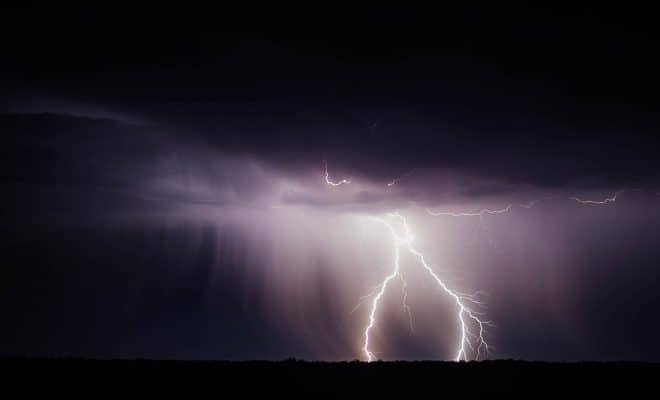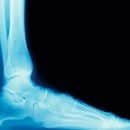Midwest Derecho: Disaster Continues

On Monday, August 10, 2020, a dreadful storm tore through the Midwest. The sirens didn’t go off where I live near Cedar Rapids, Iowa. Instead, a weather-alert text warned me of a “severe thunderstorm.” While my husband and I continued to work outside, we saw the sky change from sunny to dark in a matter of minutes. We went inside and watched from the basement as high winds knocked down trees and peeled off roofs. It was no thunderstorm. It was a derecho, which did more damage than a tornado and lasted an hour.
This video was taken by Tracey Hagen Koffron during the derecho on August 10, 2020.
A derecho is an inland category 2-3 hurricane blowing between 100-130 mph. The storm traveled around 770 miles in fourteen hours and covered eight states. But, it hit Iowa the hardest, especially Cedar Rapids and Marshalltown.
“This is worse than a hurricane because you have time to prepare for a hurricane,” Representative Finkenauer said. “There was no time to prepare for this.”
The wind devastated the power grid, knocking out power for 800,000 people across the Midwest. Unfortunately, the storm hit while many were out east helping with the hurricane.
With no power, people couldn’t cook, keep their food cold, or buy gas for their vehicles. What’s more, communication was a struggle. Local authorities had to ask the only open grocery store (Hy-Vee) to hand out fliers.
The rare storm caused four deaths, three of which were from Iowa. It levelled much of Iowa’s corn and crushed grain bins like they were paper. Overturned vehicles, trees, and power lines were strewn everywhere. After the derecho’s destruction, many were left homeless.
The Powers That Be
The morning after the storm, Iowa’s Governor Kim Reynolds asked for federal disaster aid. “I had a farmer reach out to me to say this was the worst wind damage to crops and farm buildings that he has ever seen across the state in such a wide area.”
Chuck Grassley thanked Reynolds for her quick work. Furthermore, he assured Iowa that he would get the needed disaster aid approved. He traveled across the state noting the damage to the state’s corn.
Meanwhile, President Trump tweeted, “the federal government is in close coordination with state officials.” On the 13th, Vice President Mike Pence was in Iowa on a scheduled visit. He said the Trump administration would “bring Iowa all the way back” from the storm.

Photo by Rob Merritt
With no way to communicate, the first news conference didn’t take place until the 13th. National media didn’t put much stock in the area’s tragedy, and Iowans weren’t seeing much help.
On the 14th, Iowan actor Ashton Kutcher began to call attention to the state’s plight on Twitter. “Where is the federal relief for Iowa? Ten million acres of crops have been destroyed. Houses. Communities. Wake up federal gov! What? Because it’s not called a tornado or hurricane you don’t need to act fast? Come On!!” Days later he tweeted:
Tuesday the 18th, President Trump visited Iowa for a briefing of the state’s needs. He said he’d approve the needed aid but didn’t have time to tour the state’s damage.
Midwest Derecho Status: Nine Days Later
400,000 Iowans were without power on August 10th, and there were 75,000 still without power over a week later. My mother was one of them. She couldn’t use her electric wheelchair or her lift chair which was painful for her. In that week, 911 calls doubled in the area for several reasons. People couldn’t get medical supplies or the electricity needed to run them. Because people had opened windows in their homes, their generators caused carbon monoxide poisoning. Injuries from chain saws evidently sent numerous people into the emergency rooms as well. Calls reporting fires increased as people burned candles and cooked over flames.
Utility crews worked around the clock to restore electrical service and fix storm damage. Public Works Department Jen Winter had snow plows and private contractors clearing the streets. There were downed trees, damaged street signs, and a “staggering amount” of debris. Cedar Rapids Police Chief Wayne Jerman set a citywide curfew from 10:00 PM to 6 AM during the recovery. Authorities said the cleanup efforts wouldn’t be done anytime soon.
This is one of the worst disasters in the history of the United States and, certainly, in the case of Cedar Rapids,” City Manager Pomeranz said. “There’s a lot of debris, and we’re getting rid of it, but it takes time.”
Mike Wagner with Alliant Energy noted that the scope of the damage across the state made it especially challenging for crews to restore electricity. Alliant has called in hundreds of workers from surrounding areas to help restore power.

Photo by Rob Merritt
Iowa’s Plea For More Help
Aside from debris removal and the crews working on electricity, most residents saw no assistance until seven days later. No one knew who needed help or where they were. After a week, the city opened a shelter at the Veteran’s Memorial Building and then opened more. But during that week, many homeless residents on the northwest and southwest sides of Cedar Rapids stayed in tents, cars, or their uninhabitable homes. The west side was hit the hardest with 140 mph winds. One homeless woman had stayed outside with six children, one of them two-weeks-old. Approximately 250 of the homeless were non-English-speaking Cedar Rapids refugees. Few of them understood that there was help available, and they had no way to get to it. Most of them are now staying in shelters. There are still many in Iowa without power. My mother’s electricity finally went on the morning of the 19th, but others (like my son) were still waiting on the 23rd.
Iowans are volunteering to help those displaced by the storm. Ken Gruber, the president of Omaha Rapid Response, recognized the chaos. “It sounds like they’ve got a few months of work up there.” Gruber will send at least ten people to help. One resident, Brandi Burkett, started a Facebook page to collect things for storm victims (see below). The Carson King Foundation and Iowa Love are selling t-shirts to raise money. The Red Cross and National Guard are also helping now. But the needs run deep and wide. We’ll be at this for a long time.
Cedar Rapids resident Tracey Hagen Koffron pled with friends over social media.
If you are in this area and are able PLEASE volunteer to help your community recover from the derecho! We spent yesterday as volunteers assessing a Marion mobile home park. We found senior citizens that were homebound and disabled, and others with literally no food. Most don’t have transportation to get available resources.”
Iowa has asked for more than $4 billion in disaster relief aid. $3.78 billion of that is for agriculture losses and $100 million for private utilities. It also allocated $82 million for homes and $45 million for public assistance. The government said it would approve the aid, but so far we have only received the approval of $45 million.
Footage depicting the Derecho Storm Damage by Emily James, Rob Merritt, and Haley Stamats.
The storm may be over, but the work has just begun. On the 18th, the Gazette listed available resources, shelters, food, supplies, and power for any still in need. There are so many ways you can help. Please consider giving of yourself. Someday the person in need may just be you.
Volunteer OR Give:
- United Way: Call 224-406-1366
- Iowa Derecho Resources Facebook Group
- Donations:
- United Way
- HACAP – Food Assistance
- Horizons – Meals on Wheels
- Greater CR Foundation Disaster Recovery Fund











it’s amazing to see how much damage was done, to know how long the recovery will take, and then to realize that it was not national news. I hope the federal government will give the money promised.
Thanks, Amy!
Hey Shelley!
How has the recovery progressed? It’s Sep 9 now and I haven’t heard a thing about the Cedar Rapids area in many days.
Mrs Stafford.
It’s November now and I read that the storm debris pickup would end around November 15. It’s not over yet, but it has been a mighty long journey!